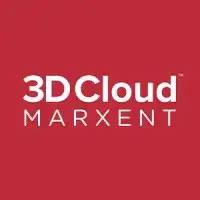Ready to launch your own podcast? Book a strategy call.
Frontlines.io | Where B2B Founders Talk GTM.
Strategic Communications Advisory For Visionary Founders
Conversation
Highlights
The Evolution of Modern Commerce Infrastructure: Lessons from Chord’s Journey from DTC to Enterprise Data Platform
Direct-to-consumer brands have mastered the art of creating anticipation and excitement – the kind that makes customers rush to open packages the moment they arrive. But behind these magical unboxing moments lies a complex data infrastructure challenge that most brands struggle to solve. This is the insight that led Bryan Mahoney and his team at Chord Commerce to pivot from operating their own DTC brands to building enterprise software for commerce operators.
In a recent episode of Category Visionaries, Bryan shared how his experience as CTO of Glossier and co-founder of Arfa shaped Chord’s approach to building and selling commerce infrastructure. Their journey offers valuable lessons for founders transitioning from operators to enterprise software providers.
From Operating Companies to Operating System
The path to Chord wasn’t linear. After leaving Glossier in 2019, Bryan and his co-founder Henry Davis started Arfa, launching two DTC brands: “The first brand we launched was a brand called Hickey, which was an all gender sweat brand. A few weeks later, we launched a menopausal beauty brand called State of Menopause.”
But running these brands led to an important realization. As Bryan explains: “Perhaps the real value in what we had created was in the technology stack and a better way to monetize it, instead of through the creation of our own brands, was to make it available to other founders who were looking for similar solutions.”
The Operator Advantage in Enterprise Software
Unlike traditional enterprise software companies that start with minimal products and follow product-led growth strategies, Chord took a different approach. Their deep operational experience shaped both their product development and go-to-market strategy.
“We really believe that we’re operators. We had created a system as operators for other operators,” Bryan notes. This operational background gave them unique insights into the real challenges brands face: “We know where the hard parts are and we really felt like we’ve been able to productize, like I said, sort of decades of experience.”
Breaking Enterprise Software Marketing Conventions
Chord’s marketing approach deliberately breaks from traditional enterprise software conventions. Working with creative agencies like Red Antler, they developed a brand that would resonate with modern commerce operators. As Bryan describes their vision: “I want it to feel more like a brand site, something that you want to buy, a brand that you want to be a friend with, as opposed to a platform that you’re going to choose because you don’t want to be fired.”
Building With Early Adopters
For founders bringing new commerce technology to market, Bryan emphasizes the importance of finding the right early partners: “Find some brands that are willing to build with you… we did that and having some credible logos, having some feedback, having some real life customers on the platform made it an awful lot easier for us to bring it to market.”
This approach requires genuine curiosity and a willingness to understand each potential customer’s unique challenges. As Bryan advises: “Be curious, offer advice, even if it means not necessarily getting the sale. It’s a long game and having a really good reputation.”
The Future of Commerce Infrastructure
Looking ahead, Bryan sees commerce becoming increasingly distributed and experiential: “Commerce is really a part of like all of our experiences. And the more we interact, the more commerce lives everywhere, the more you as a customer, your data lives everywhere.”
This vision has shaped Chord’s focus on solving the data infrastructure challenge. While storefront and checkout experiences have become increasingly commoditized, managing and activating customer data across channels remains a significant challenge for brands.
Bryan challenges the industry’s obsession with perfect attribution: “There’s sort of like this fascination around attribution, like pixel perfect attribution… It’s kind of like a false promise. It’s about showing up consistently where your customer is and giving them a really great product and a great experience.”
The lesson for founders? Sometimes the most valuable enterprise software comes from deeply understanding operational challenges and building solutions that give operators superpowers, rather than trying to replace them entirely.
Actionable
Takeaways
Leverage Early Experiences to Inform Future Ventures:
Bryan’s journey from offering PowerPoint enhancements to founding a cutting-edge e-commerce data platform illustrates the value of drawing on early entrepreneurial experiences. For tech founders, every past project, no matter how small, can contribute valuable insights to future ventures.
The Power of Strategic Pivots: Chord Commerce’s
evolution from a broader e-commerce ambition to a focused data platform underscores the importance of strategic pivots. Founders should remain flexible, and willing to refine or change their business model based on market feedback, internal capabilities, and emerging opportunities.
Build Technology with Operator Insights:
Developing a platform or product with firsthand experience of the pain points it addresses can significantly enhance its market fit and value proposition. Founders should incorporate their own operational struggles and successes into the design and functionality of their solutions.
Marketing Is as Important as the Product:
Chord’s branding strategy, developed in partnership with renowned creative agencies, demonstrates that how a B2B product is presented can significantly impact its reception. Founders should invest in branding that resonates with their target market’s aspirations and values, bridging the gap between enterprise-grade functionality and consumer-brand approachability.
Future-Proof Your Business by Focusing on Data:
Bryan’s vision for e-commerce, where data plays a central role in creating personalized customer experiences, highlights the increasing importance of first-party data management. Founders should prioritize building or integrating robust data analysis capabilities to stay competitive in an evolving digital landscape.





























